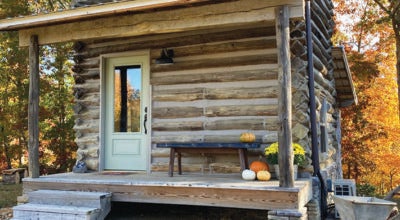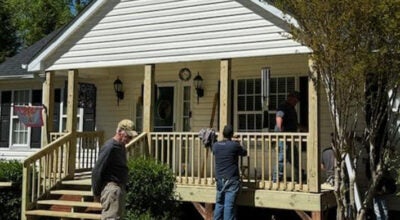Black History: Black Wall Streets thrives in early 1900s
Published 10:42 am Thursday, February 25, 2021
|
Getting your Trinity Audio player ready...
|
By Sharon Anderson
For the Enterprise
I am sure you have heard of Wall Street . . . the eight-block-long street in the Financial District of Lower Manhattan in New York City whose occupants drive the American financial industry.
But did you know that there were three other hubs of commerce created by and for African American financial interests? Durham, N.C.; Richmond, V; and, Tulsa, Okla. each housed areas of financial and entrepreneurial prominence.
Durham
A thriving area of black businesses and financial services occupied a four-block district in Durham. The Parrish Street area became known in the 1950s as Black Wall Street, a throwback to the financial district in New York City. During the late 1800s and early 1900s, Parrish Street was the center of commerce in Durham. By 1927, the number of black-owned businesses in Durham had tripled.
With money saved and loans, John Merrick opened North Carolina Mutual Life Insurance in 1898. By 1910, the company was the “world’s largest Negro business.” The insurance company has been a catalyst for economic and social development for 120 years. The bank is at 411 W. Chapel Hill St. in Durham.
Mechanics & Farmers bank was born out of necessity. African Americans were often barred from banking with white banks. Richard Fitzgerald, a brickmaker and businessman, and Dr. James Shepard, a pharmacist and founder of what is now N.C. Central University, established M&F bank in 1907. M&F was the first African American bank in the U.S. and has turned a profit every year since it opened. Today, M&F still has a branch on Parrish Street. There are also branches in Winston-Salem, Greensboro, Charlotte and Raleigh. The bank’s headquarters is at 2705 Durham-Chapel Hill Boulevard in Durham.
Richmond
The Jackson Ward district in Richmond has a long tradition of African American businesses. Following the Civil War, freed blacks created a thriving business community that came to be known as the “Black Wall Street of America.” Business leaders included John Mitchell Jr., editor of the Richmond Planet, an African American newspaper, and Maggie Lena Walker, the first black woman to charter and serve as president of an American bank, the Saint Luke Penny Savings Bank.
The city’s plans for redevelopment, starting in the early 1940s, unfortunately targeted Jackson Ward. The plans had the effect of severely disintegrating the historic community’s social structure and destroying many of its homes.
By the end of the 1990s, Richmond began work to revitalize Jackson Ward. The home of Maggie Lena Walker has been restored and was designated a National Historic Site in 1978. It opened in 1985 as a museum.
The revival of the Jackson Ward neighborhood into a popular historic district has not come without controversy over gentrification. By 2010, there were almost twice as many white people in the neighborhood as there were black people.
Tulsa
The most infamous of the three districts is located in Tulsa. Greenwood, a historic freedom colony, had one of the most “prominent concentrations of African American businesses in the United States during the early 20th century.” Known as America’s Black Wall Street, Greenwood had doctors, lawyers, real estate agents and entrepreneurs. This, despite the fact Oklahoma was known to have some of the harshest Jim Crow laws in the country.
Greenwood was burned to the ground in 1921 during the Tulsa race massacre. The June 21, 1921 edition of the Tulsa World reported that “… following a night of race rioting and death, hundreds of armed white men in motor cars formed a circle of steel about “Little Africa,” and a continuous rattle of rifle and revolver fire could be heard.” White residents of Tulsa referred to the area north of the Frisco railroad tracks as “Little Africa.”
Tensions between black and white residents had been brewing for years, but it was the accusation by Sarah Page, a white woman, that Dick Rowland, a black teenager, had assaulted her that led eventually to the massacre.
It has been estimated that 300 black Greenwood residents were killed, hundreds more were injured and 5,000 were left homeless. All told, 35-square blocks of the African American community were destroyed during the evening of May 31 – June 1, 1921. None who participated in the massacre and destruction were ever arrested or prosecuted.
Survivors who chose to remain in Greenwood, rebuilt much of the district, despite opposition from many white Tulsa business and political leaders. Greenwood once again thrived, but not like it had prior to the race riot. However, with desegregation during the 1950s and 1960s, black residents were encouraged to live and shop in other parts of the city.
After the massacre, local residents rarely discussed it for fear of history repeating itself. Records of what happened disappeared. The massacre was literally erased from history, until the state of Oklahoma established a commission to try to find out what happened. In 2001, the commission released a report of its findings. There have since been calls for reparations for victims of the attack.
Conclusion
Despite the searing systemic wounds of Jim Crow America, black owned brick and mortar businesses were launched and thrived in the early 1900s, giving rise to hubs of African American businesses and financial services, many we still in existence today.
Anderson lives in Bermuda Run.





